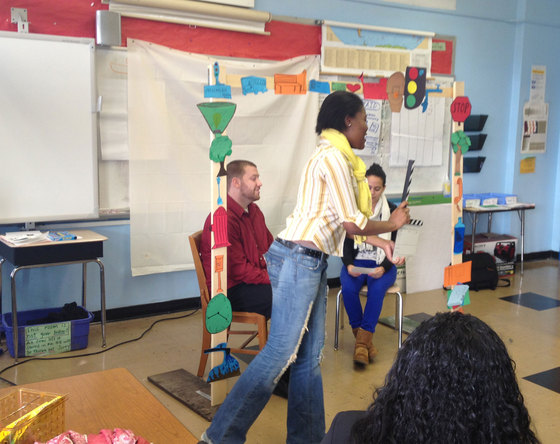How can someone who is too young to vote have a say in the future of their neighborhood? What does civics really look like in action? In the spring of 2012, CUP teaching artist Dillon de Give worked with students from Elise DeBoard’s Government class at the International Community High School in Mott Haven in the Bronx, a public school for recent immigrants. To find out how they could play a role in their new communities, students investigated a new initiative called participatory budgeting.
Participatory budgeting is a different way to make decisions about publicly funded projects in New York City neighborhoods. It gives community members real decision-making power over some public money. The school’s very own City Council Member, Melissa Mark-Viverito, has dedicated one million dollars of discretionary funding to participatory budgeting this year. But how can students fit into all of this? To get a handle on the process, students interviewed Joseph Taranto, the Council Member’s Chief of Staff, and Andrew King, Viverito’s Director of Community Affairs.
Students broke down the participatory budgeting process and some of its rules. They worked collaboratively on creating scripts, acting, making props, and shooting a series of short videos with answers to such burning questions as: How can you have a say over some of your tax dollars? Or actually get a project to happen through participatory budgeting? The videos can be shown in neighborhood assemblies or any other gathering place where young people want to find out how they can have a say in their community.
Check out the videos here:










